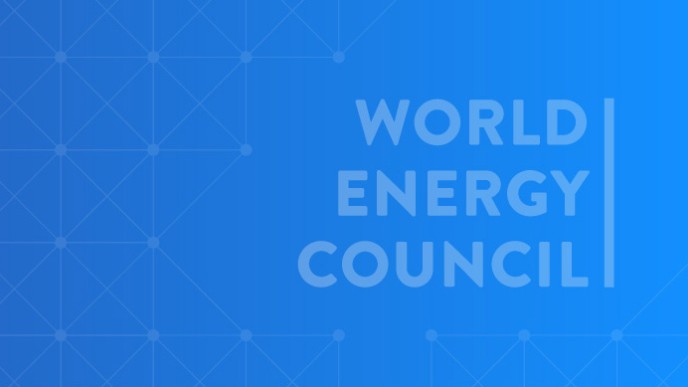Women’s place in the energy sector is a major theme for Marie-José Nadeau, Chair of the World Energy Council. Recently she chaired a session at the "26th World Gas Conference" in Paris, describing the many challenges in the energy sector and has been widely quoted on the topic in leading publications. She talks about the issues created by the global persistence of gender inequality in the workplace and how the link between women’s participation in the workforce and economic growth is clear.
The following are extracts from her talk addressing the World Gas Conference as the first woman appointed on the World Energy Council Board:
“I am sure that many women in this auditorium can claim to be the first woman to occupy their position. We meet at a challenging time in the energy sector. Oil prices have dropped significantly with mixed effects. On the one hand, for resource holders, revenue is sharply down, seriously impacting government budgets and reducing the amount of money available for key areas such as health and education.
On the other hand, lower energy prices benefit consumers and provide a boost to economic growth. Clearly the effects are complex and they vary from country to country. But lower energy costs mean nothing to those 1.1 billion people who do not have access to modern forms of energy. World Energy Council scenarios’ work tells us that we are not on the right path to eradicate energy poverty. As many as 350,000 to 500,000 people will still be deprived from access to energy in 2050. Without energy, there can be no adequate health care, sanitation, education, economic growth or job creation.
Without these basic functions and services, the risk of social and political disruption increases significantly. Having safe, sustainable and reliable energy is central to what it takes to be a healthy, caring and peaceful society. The elimination of energy poverty will involve many actors and multiple solutions. It will necessarily take time. However, one thing is clear: finding solutions for a sustainable energy future requires a diversity of voices and the solution has to encompass and include those that are caring for the poor, and empower them to break the poverty cycle and provide access.
Around the world, out of a population of 7 billion, 49.6% are women. Collectively, we must reach out to them. Their involvement, at all levels, is essential to improve their quality of life as well as that of their families and communities. But it would be misleading to focus only on poor countries and emerging economies. In the United States, for example, just 5% of Fortune 500 CEO’s are women and only 17% of corporate board seats and 25% of management positions are held by women, even though women make up nearly half the workforce.
In Europe, some countries, France being one of them, has set quotas for women representation at the boards of publicly traded companies. However, many people have expressed philosophical doubts on the idea of imposing quotas. But, let’s face it: it is working and it is closing the gender gap, at least at that level.
It’s been over 40 years since the mass arrival of women in the corporate workforce. Twenty years have passed since organisations created their first formal diversity plans. Although there is progress, women continue to lag men in the overall workforce participation at the professional and executive levels. Moreover, current female hiring, promotion and retention rates are insufficient to create gender diversity in a foreseeable future.
A tremendous amount of research, energy and effort has gone into the issue of gender equality in the work place. Many have documented the cost to both women and businesses of the structural barriers and conscious and unconscious biases that continue to damper women’s participation in the global economy and accession to leadership roles in business organisations.
The reasons for the global persistence of gender inequality in the workplace are numerous: educational disparities, cultural norms, women consistently taking on the double burden of balancing work and domestic responsibilities and the absence of consistent enabling infrastructures in countries around the globe; by this, I mean anti-discrimination laws, support for child and elder care, amongst other things.
Our businesses need to be able to wrest the full value of more than half of the world’s labour pool. One way companies benefit from gender diversity is a more balanced mix of leadership strengths. Significant talent is being wasted because organisations still don’t know how to fully utilise this potential.
There is no one-size-fits-all solution. Each employer needs to analyze its own unique circumstances with respect to gender diversity – the current state of its workforce dynamics and the most important drivers of change – in order to craft the most effective strategy. Making progress on gender diversity requires an integrated ecosystem: direction setting, training, mentorship programs, and supportive policies and infrastructures. All of these must be held together by a clear, visible and consistent commitment from governments and top management.
Structure of leadership programs should include training in overcoming biases and aimed at both men and women. Also needed are institutional enabling mechanisms such as comprehensive, transparent company policies stipulating equal opportunities and compensation for men and women with equivalent qualifications and experience, as well as policies on appropriate behavior on how to interact with members of the opposite sex.
By 2015, one might have expected significant leaps forward in corporate gender diversity. But the statistics don’t lie and barriers remain. The link between women’s participation in the workforce and economic growth is clear. In addition, it is a question of urgency for women themselves and for the families and communities that depend on them.
In closing, I would like to quote Christine Lagarde, Head of the International Monetary Fund:
“When women are called to action in times of turbulence, it is often on account of their composure, sense of responsibility, and great pragmatism in delicate situations.”
Links to the video to the recent inaugural Women in Energy Summit in Doha where Marie-José Nadeau sat on a panel of experts to discuss the place of women in the energy sector and her contribution to a high level round table where the topic “Accelerating the Gender Balance” were discussed are:
-
Gulf Intelligence Special Report ‘How to advance women in energy’: Read more






